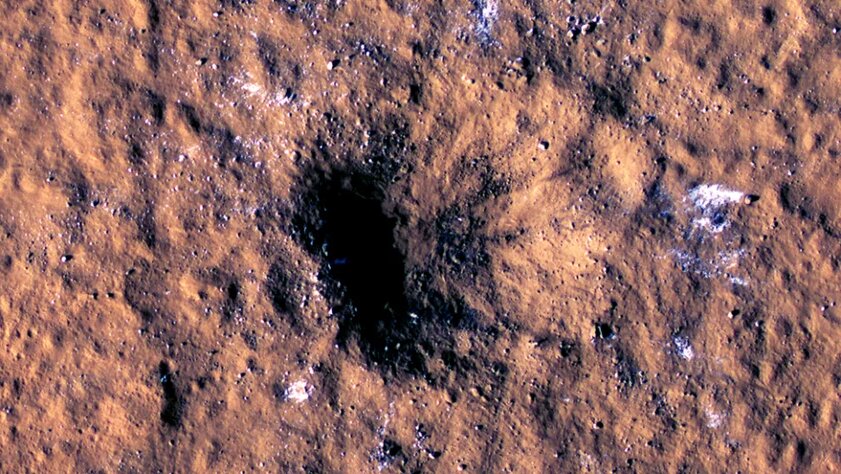Yesterday, October 27, NASA representatives officially published information about a certain crater on the surface of Mars, the study of which gave more answers to the question of the colonization of the “red planet” than many years of research and dozens of spacecraft. The fact is that about a year ago, on December 24, 2021, the InSight rover, which studies the surface and soil of Mars, recorded impressive seismic activity in the region of the Amazon plain. It soon turned out that an asteroid of impressive size simply crashed into Mars – the NASA Mars Reconnaissance Orbiter orbital probe found a corresponding fresh crater, plus the rover even managed to record the sound of the collision.
And although at first no one attached much importance to this event (asteroids of various sizes literally created the current landscape of the Moon, for example), soon NASA experts announced that they managed to record the fall of the largest cosmic body on the planet within the solar system in the entire history of mankind. NASA employees noted that the meteorite was about 5 to 12 meters in diameter, so for the Earth, for example, it would not pose any threat – such a cosmic body would burn up in the planet’s atmosphere without reaching the surface. But Mars has no atmosphere, so the diameter of the impact crater was 150 meters.
At the same time, if the estimates of scientists are correct, the depth of the crater is 21 meters, and the Martian soil thrown to the surface from such a powerful impact scattered up to 37 kilometers from the crater itself. But the main thing in the news is not that the meteor was really huge, but NASA managed to fix it all. The most important news is that together with the soil on the surface of Mars, the meteorite “threw out” an impressive amount of water in the state of aggregation of ice. Scientists have said that there is so much ice that it can even be seen in pictures from a spacecraft. And the size of the ice fragments is probably really impressive.

For humanity, this is the most important discovery in many years – if the depth of the crater is really 21 meters, and water in the form of ice appeared on the surface in such quantities, then the future colonizers of Mars will not be difficult to extract the most important resource in the foreseeable future. Mining ice from a depth of 20 meters, and then melting it for irrigating crops, using it for industrial purposes, and even as drinking water after filtering, is not at all a problem. And, of course, where there is water, there is always a chance to find life.
Source: Trash Box
With 6 years of experience, I bring to the table captivating and informative writing in the world news category. My expertise covers a range of industries, including tourism, technology, forex and stocks. From brief social media posts to in-depth articles, I am dedicated to creating compelling content for various platforms.







